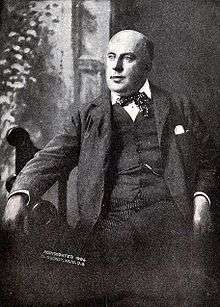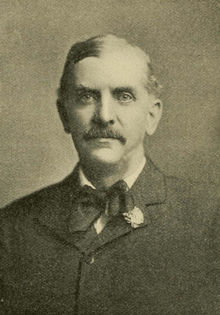1899 Ohio gubernatorial election
The 1899 Ohio gubernatorial election was held on November 2, 1899. Republican nominee George K. Nash defeated Democratic nominee John R. McLean with 45.94% of the vote.
| |||||||||||||||||||||
| |||||||||||||||||||||
| |||||||||||||||||||||
| Elections in Ohio | ||||||||||||||||||||
|---|---|---|---|---|---|---|---|---|---|---|---|---|---|---|---|---|---|---|---|---|
.svg.png) | ||||||||||||||||||||
|
||||||||||||||||||||
|
||||||||||||||||||||
|
|
||||||||||||||||||||
|
||||||||||||||||||||
|
|
||||||||||||||||||||
General election
Candidates
Major party candidates
- George K. Nash, Republican
- John R. McLean, Democratic
Other candidates
- Samuel M. Jones, Independent
- Seth H. Ellis, Union Reform
- George M. Hammell, Prohibition
- Robert Bandlow, Socialist Labor
Results
| Party | Candidate | Votes | % | ± | |
|---|---|---|---|---|---|
| Republican | George K. Nash | 417,199 | 45.94% | ||
| Democratic | John R. McLean | 368,176 | 40.54% | ||
| Independent | Samuel M. Jones | 106,721 | 11.75% | ||
| Independent | Seth H. Ellis | 7,799 | 0.86% | ||
| Prohibition | George M. Hammell | 5,825 | 0.64% | ||
| Socialist Labor | Robert Bandlow | 2,439 | 0.27% | ||
| Majority | 49,023 | ||||
| Turnout | |||||
| Republican hold | Swing | ||||
gollark: Wow, it does equally badly on kind of generic terms.
gollark: ++search heat
gollark: ++eval-polish + 1 1
gollark: ++ping
gollark: ++exec```haskellhaskell```
References
- "Guide to U.S. elections". Books.google.com. Retrieved 2020-07-04.
This article is issued from Wikipedia. The text is licensed under Creative Commons - Attribution - Sharealike. Additional terms may apply for the media files.


